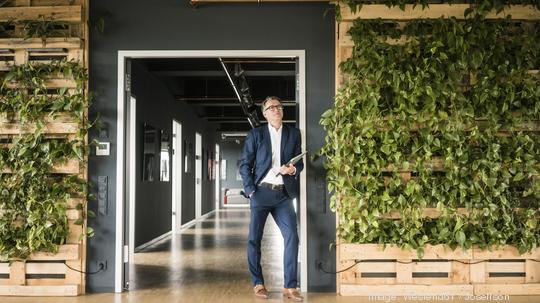
In the coming years, the next battle for business competitiveness will be won by those leadership teams able to transform their organizations via the twin engines of technology and sustainability. This change demands a new set of individual and organizational capabilities that fuse environmental and social impact with shareholder value. As stakeholder demands increase, success depends on being able to cultivate closer relationships with the employees, customers and wider society. New evidence suggests that many organizations are failing to deliver on sustainability promises because they are struggling to achieve stakeholder-centricity.
There is no doubt that businesses are making stronger commitments to sustainability; this trend has been intensified in recent months. Businesses have been forced to adapt to economic and social disruptions and refocus boardroom agendas around a plethora of topics: inclusion, diversity and equity, culture, social purpose, the wellbeing of their people, and environmental stewardship, to name a few.
Changes, however, are unfortunately often cosmetic, as stakeholder-centricity is incorporated as an afterthought, rather than something that is fully embedded, measurable, and incentivized from the get-go. Accenture’s recent Sustainable Organization survey revealed that 68% of senior executives believe they create empowering workplace environments—but just 36% of employees agree. Further analysis revealed that 43% of companies are failing to match Environmental, Social and Governance (ESG) rhetoric with results.
Can responsible organizations adopt a ‘built-in’ rather than ‘bolted-on’ approach to stakeholder-centricity? It is with a strong “sustainability DNA” that businesses can fulfill the promise of stakeholder capitalism and deliver lasting transformation and value. And this starts at the top.
Building blocks of stakeholder-centric organizations
Leading organizations build Sustainability DNA by implementing a range of defined management practices and processes that strengthen and maintain three foundations of stakeholder-centric behavior:
- Stronger Human Connections that build an understanding of stakeholder needs and champion societal issues as well as inclusion, diversity, and equality within the organization and beyond.
- Collective Intelligence that results in decision-making processes that turn these stakeholder needs into action; and
- Accountability at all levels, through a culture that makes the delivery of broad-based value the responsibility of all employees, with leadership from the top.
Path to stakeholder-centricity
Our new analysis shows that leadership teams that build sustainability DNA into the heart of their organizations can deliver better financial value and wider impact among their stakeholders. Organizations that have deeply embedded sustainability management practices do better than their counterparts by 21% on both profitability and positive environmental and societal outcomes.
What’s standing in the way?
Why are so few organizations making progress to true stakeholder-centricity? Our analysis shows that, in many cases, there is a disconnect between executives and stakeholders. While there is broad agreement on the sustainability goals businesses should be setting, there is a misalignment on the extent to which the necessary transformation is under way.
Over two thirds, or 68%, of executives tells us that they have developed a robust sustainability plan, but only 21% of employees say that employer commitments go beyond the superficial. Similarly, 69% of executives say they track and monitor progress against sustainability goals, though only 34% of stakeholders rate those goals as realistic.
When companies’ actions seem to be falling short of stakeholders’ expectations, trust can evaporate. Indeed, only half of employees and other stakeholders in our survey trust leaders to ‘walk the talk’ on sustainability. At the core of this misalignment is the fact that, for all the good intentions, sustainability remains a second-tier priority for many businesses given more immediate commercial concerns.
Building trust to fuel progress
Businesses can improve their Sustainability DNA and close the perception-reality gap on progress with the following three steps:
· Diagnose: Understand the strength of your Sustainability DNA through feedback from multiple stakeholder sets to see where the consensus gaps lie.
· Define: Identify key interventions to boost stakeholder alignment and key actors of change, looking at how to close specific consensus gaps.
· Develop: Build a roadmap for sustainable and equitable change with clear KPIs, setting out your plan to close gaps. Guided by accurate and transparent data, communicate progress to ensure positive stakeholder engagement in future challenges.
The opportunity is clear: sustainability has become a powerful source of competitive advantage, creating financial value and societal impact. As our research shows, there is some stakeholder cynicism regarding business intentions and progress. Business leaders that take these steps can show they are listening to and involving their stakeholders more effectively, building trust and aligning more closely on both goals and progress.
Check out Accenture’s Shaping the Sustainable Organization and take a high-level diagnostic assessment of the strength of your company’s sustainability DNA.
Debra McCormack, Managing Director and Global Board Effectiveness & Sustainability Lead at Accenture
